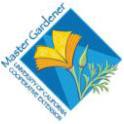Winter 2024
-
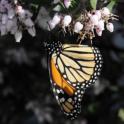
Winter Blooms for Garden Pollinators
by Laurinda Ochoa
During our cold and wet winter season, many native birds and pollinators rely on plants to provide both food and shelter. Some easy-to-grow winter-blooming native plants that provide pollen, nectar, and shelter are Manzanita, Ceanothus, Toyon, and Silktassel. There are also California wildflowers that bloom in the late winter and early spring when they have become established in the fall and early winter months.
One of the bright spots during winter might be watching our gardens provide the blooms and shelter needed by our native pollinators.
-
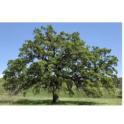
Gardening Under Oaks
by David George
Do you have one or more native oak trees in your yard or would like to plant one? Our local oaks are magnificent and important trees to the Contra Costa ecosystem. They deserve to be treated with respect and care. What are the best practices for gardening under and around native oaks? This article will guide you through the selection process of plants that are beautiful, waterwise, healthy, and complimentary to your oaks.
Oaks are taxonomically called "Quercus," which is Latin for “Fine Tree.". They are called a “keystone” species because they support entire ecosystems. If oaks were to disappear from our region, birds, small mammals, insects, and other creatures that rely upon them would soon disappear as well.
-
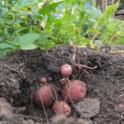
Potatoes are a Perfect Winter Crop!
by Robin Mitchell
Potatoes are a fun and easy crop to grow at home, with relatively few pests and diseases. Of course, they are inexpensive to buy in the grocery store, but growing them at home allows you to try varieties that you might not get in the store, and you can eat them fresh from the ground.
In the relatively mild climate of Contra Costa County, and in particular on the San Francisco Bay side of the county, it is possible to grow potatoes almost all year. Know that if you grow potatoes, you will likely never harvest all the tiny potatoes, so you will potentially have potatoes in your garden "forever," as those will continue to grow and produce more potatoes!
-
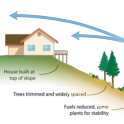
Living in Wildfire Country: Winter Calm and Winter Tasks
By Marilyn Saarni
When winter rains arrive our anxiety about wildfire risk is soothed. Finally, we can leave the leaves on the ground to protect and nurture the soil. Here are a few tasks that are easiest done during the fall or winter to reduce the demanding maintenance work a firewise garden can require as late spring and wildfire season approaches.
And here are some more resources on Winter gardening tasks.
-
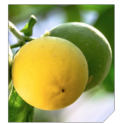
Citrus in the Winter
by Robyn Barker
Once the railroads connected the frozen northern plains of the United States to the southern states in the mid-1800s, oranges became a special treat for snowbound prairie dwellers. Whether pierced by cloves to make scented pomanders or tucked into the toe of a Christmas stocking, the brightly colored fruit brought sunshine and sweetness to the darkest days of the year.
Mandarin oranges are still a much-anticipated end-of-the-year treat. Citrus can take a long time to ripen, up to 8–10 months, so the reliable December bounty, whether from the grocery store or from the backyards of those of us lucky to have these trees, is a welcome joy. If you grow citrus, pick all your fruit once it has fully ripened. Leaving fruit on the tree won’t improve its quality and may impact the frost tolerance of the tree.
-

What is Helpful for a Gardener to Know About Light?
by Monika Witte
What impact does the solar radiation that lands on the earth’s surface have on plants? First, we all know that plants produce their own food using photosynthesis. Also, the warming soil in spring, encouraging seeds to germinate and plants to grow, results from the increasing amount of radiation occurring in the spring. The cooling soil and reduced light in the fall signal plants to enter dormancy.
What is light, from the perspective of a gardener?
Solar radiation includes a spectrum ranging from very high energy gamma and x-rays down to low energy radio waves. The atmosphere reflects, absorbs, or scatters most of this incoming radiation. In particular, ozone absorbs most of the harmful ultraviolet (UV) radiation.
-
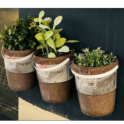
Small Indoor Winter Pleasures
by Cynthia Engers
We all enjoy herbs added to our foods, and if they’re not available in your winter garden, consider getting a head start on spring by growing them indoors on a windowsill.
You can grow them from cuttings, buy small plants, or start them from seed, which is the most budget-friendly option. You can use them for cooking once they reach a few inches in height. Popular choices for indoor herbs include chives, basil, lavender, parsley, mint, rosemary, oregano, tarragon, sage, and thyme. Coriander and mint are good options as well. Basil, parsley, and cilantro generally grow well from seed.
-
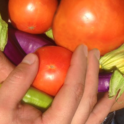
Small Spaces: Community Gardens
by David George
The Small Spaces Gardening column aims to provide tips and techniques for successfully growing flowers, fruits, and vegetables in a limited amount of space.
However, what if you would like to grow your own produce but have no space at all, such as a patio home, apartment, or condominium? We advise you to check out a nearby Contra Costa County community garden. community garden.

